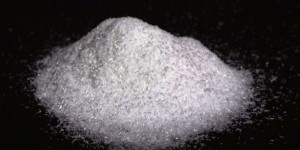.
.
.
The following Video is not from Bashar/Darryl Anka. There is a lot of information in it…always trust your inner sensor, what feels true for you…and don´t take information “as true” in general
.
.
.
Most of us ignore our phone’s instruction manual which is usually buried in a miscellaneous drawer. The irony is that if we took the time to read what the manual says, we wouldn’t use our phone the same way. For instance, the safety and regulatory guide that came with my phone states (in fine print): “To comply with RF exposure requirements [Radiofrequency Radiation], a minimum separation distance of 1.5 cm must be maintained between the user’s body and the the handset, including antenna.” Epidemiologist Devra Davis of the University of Pittsburgh told the NY Times that she recommends keeping a phone out of close proximity to the head or body, by using wired headsets or the phone’s speaker. Children should text rather than call, she said, and pregnant women should keep phones away from the abdomen. Watch the video below about the top 5 phones that produce the highest amount of radiation: Related: Fukushima Radiation: Your Days of Eating Pacific Ocean Fish Are Over, Or Worse… 12 Facts About Microwaves That Should Forever Terminate Their Is it Dangerous to Sleep With a Cell Phone Under Your Pillow? Credits: CNET, Living Traditionally | Source: http://www.whydontyoutrythis.com/2015/03/these-are-top-5-phones-to-avoid-with-the-highest-radiation.html
……………………………………………………….
http://www.cnet.com/topics/
Each day is EARTH DAY…start caring more for your environment…it´s the only planet we have…and it´s our current HOME !!! Arya
“The Ghost Of Earth Day Present” – A Master Shift Original Be a part of the biggest grass-roots event in history by planting a tree on EARTH DAY, APRIL 22ND, 2015 as a “give back” to Earth. This event is being hosted by The Master Shift, Forest Nation, The White Feather Foundation and the Earth Day Network as well as thousands of contributing organizations from around the globe. Our goal is to plant one billion seeds/trees. Join the cause: https://www.facebook.com/events/327883710751172Film credits:Directed by: Michael D. Stern – www.michaeldstern.comStarring: John Mervini and Sicanni Tallan PurizacaMusic Credits: Dreaming of Love by Lights Resolve – Act Three by Jason Shaw – Babylon by J. Beal – (No Copyright Infringement Intended)Koala Photo – ©WIRES Volunteer, Louise O’Brien www.wires.org.au
Posted by The Master Shift on Donnerstag, 9. April 2015
http://www.themastershift.com/
The shocking story of how Aspartame became legal
Did you know that Aspartame was banned by the FDA twice? How is this product legal now? The bittersweet argument over whether Aspartame is safe or not has been going on for a long time. On one side we have medical evidence that suggests we should avoid using it and on the other side we lean on the FDA’s approval that suggests it is safe. Since generally that seems to be the factor that many continue to hold trust based upon, I thought we could look into the Aspartame story to find out how it came to be accepted as safe by the FDA. You would think that something so widely used and so well accepted would have quite the pristine story leading to its acceptance. I imagine one will discover otherwise after reading this post. It all starts in the mid 1960′s with a company called G.D. Searle. One of their chemists accidentally creates aspartame while trying to create a cure for stomach ulcers. Searle decides to put aspartame through a testing process which eventually leads to its approval by the FDA. Not long after, serious health effects begin to arise and G.D. Searle comes under fire for their testing practices. It is revealed that the testing process of Aspartame was among the worst the investigators had ever seen and that in fact the product was unsafe for use. Aspartame triggers the first criminal investigation of a manufacturer put into place by the FDA in 1977. By 1980 the FDA bans aspartame from use after having 3 independent scientists study the sweetener. It was determined that one main health effects was that it had a high chance of inducing brain tumors. At this point it was clear that aspartame was not fit to be used in foods and banned is where it stayed, but not for long. Early in 1981 Searle Chairman Donald Rumsfeld (who is a former Secretary of Defense.. surprise surprise) vowed to “call in his markers,” to get it approved. January 21, 1981, the day after Ronald Reagan’s inauguration, Searle took the steps to re-apply aspartame’s approval for use by the FDA. Ronald Reagans’ new FDA commissioner Arthur Hayes Hull, Jr., appointed a 5-person Scientific Commission to review the board of inquiry’s decision. It did not take long for the panel to decide 3-2 in favor of maintaining the ban of aspartame. Hull then decided to appoint a 6th member to the board, which created a tie in the voting, 3-3. Hull then decided to personally break the tie and approve aspartame for use. Hull later left the FDA under allegations of impropriety, served briefly as Provost at New York Medical College, and then took a position with Burston-Marsteller. Burstone-Marstella is the chief public relations firm for both Monsanto and GD Searle. Since that time he has never spoken publicly about aspartame. It is clear to this point that if anything the safety of aspartame is incredibly shaky. It has already been through a process of being banned and without the illegitimate un-banning of the product, it would not be being used today. Makes you wonder how much corruption and money was involved with names like Rumsfeld, Reagan and Hull involved so heavily. In 1985, Monsanto decides to purchase the aspartame patent from G.D. Searle. Remember that Arthur Hull now had the connection to Monsanto. Monsanto did not seem too concerned with the past challenges and ugly image aspartame had based on its past. I personally find this comical as Monsanto’s products are banned in many countries and of all companies to buy the product they seem to fit best as they are champions of producing incredibly unsafe and untested products and making sure they stay in the market place. Since then, aspartame has been under a lot of attack by scientists, doctors, chemists and consumers about it’s safety and neurotoxic properties. Piles of comprehensive studies have been completed that show aspartame is a cause for over 90 serious health problems such as cancer, leukemia, headaches, seizures, fibromyalgia, and epilepsy just to name a few. We have written several articles discussing various affects of aspartame. Aspartame Leukemia Link. Aspartame and Brain Damage. Full Timeline on Aspartame’s Legal and Safety Battles December 1965– While working on an ulcer drug, James Schlatter, a chemist at G.D. Searle, accidentally discovers aspartame, a substance that is 180 times sweeter than sugar yet has no calories. Spring 1967– Searle begins the safety tests on aspartame that are necessary for applying for FDA approval of food additives. Fall 1967– Dr. Harold Waisman, a biochemist at the University of Wisconsin, conducts aspartame safety tests on infant monkeys on behalf of the Searle Company. Of the seven monkeys that were being fed aspartame mixed with milk, one dies and five others have grand mal seizures. November 1970– Cyclamate, the reigning low-calorie artificial sweetener — is pulled off the market after some scientists associate it with cancer. Questions are also raised about safety of saccharin, the only other artificial sweetener on the market, leaving the field wide open for aspartame. December 18, 1970– Searle Company executives lay out a “Food and Drug Sweetener Strategy’ that they feel will put the FDA into a positive frame of mind about aspartame. An internal policy memo describes psychological tactics the company should use to bring the FDA into a subconscious spirit of participation” with them on aspartame and get FDA regulators into the “habit of saying, “Yes”.” Spring 1971– Neuroscientist Dr. John Olney (whose pioneering work with monosodium glutamate was responsible for having it removed from baby foods) informs Searle that his studies show that aspartic acid (one of the ingredients of aspartame) caused holes in the brains of infant mice. One of Searle’s own researchers confirmed Dr. Olney’s findings in a similar study. February 1973– After spending tens of millions of dollars conducting safety tests, the G.D. Searle Company applies for FDA approval and submits over 100 studies they claim support aspartame’s safety. March 5, 1973– One of the first FDA scientists to review the aspartame safety data states that “the information provided (by Searle) is inadequate to permit an evaluation of the potential toxicity of aspartame”. She says in her report that in order to be certain that aspartame is safe, further clinical tests are needed. May 1974– Attorney, Jim Turner (consumer advocate who was instrumental in getting cyclamate taken off the market) meets with Searle representatives to discuss Dr. Olney’s 1971 study which showed that aspartic acid caused holes in the brains of infant mice. July 26, 1974– The FDA grants aspartame its first approval for restricted use in dry foods. August 1974– Jim Turner and Dr. John Olney file the first objections against aspartame’s approval. March 24, 1976– Turner and Olney’s petition triggers an FDA investigation of the laboratory practices of aspartame’s manufacturer, G.D. Searle. The investigation finds Searle’s testing procedures shoddy, full of inaccuracies and “manipulated” test data. The investigators report they “had never seen anything as bad as Searle’s testing.” January 10, 1977– The FDA formally requests the U.S. Attorney’s office to begin grand jury proceedings to investigate whether indictments should be filed against Searle for knowingly misrepresenting findings and “concealing material facts and making false statements” in aspartame safety tests. This is the first time in the FDA’s history that they request a criminal investigation of a manufacturer. January 26, 1977– While the grand jury probe is underway, Sidley & Austin, the law firm representing Searle, begins job negotiations with the U.S. Attorney in charge of the investigation, Samuel Skinner. March 8, 1977– G. D. Searle hires prominent Washington insider Donald Rumsfeld as the new CEO to try to turn the beleaguered company around. A former Member of Congress and Secretary of Defense in the Ford Administration, Rumsfeld brings in several of his Washington cronies as top management. July 1, 1977– Samuel Skinner leaves the U.S. Attorney’s office and takes a job with Searle’s law firm. (see Jan. 26th) August 1, 1977– The Bressler Report, compiled by FDA investigators and headed by Jerome Bressler, is released. The report finds that 98 of the 196 animals died during one of Searle’s studies and weren’t autopsied until later dates, in some cases over one year after death. Many other errors and inconsistencies are noted. For example, a rat was reported alive, then dead, then alive, then dead again; a mass, a uterine polyp, and ovarian neoplasms were found in animals but not reported or diagnosed in Searle’s reports. December 8, 1977– U.S. Attorney Skinner’s withdrawal and resignation stalls the Searle grand jury investigation for so long that the statue of limitations on the aspartame charges runs out. The grand jury investigation is dropped. June 1, 1979– The FDA established a Public Board of Inquiry (PBOI) to rule on safety issues surrounding NutraSweet. September 30, 1980– The Public Board of Inquiry concludes NutraSweet should not be approved pending further investigations of brain tumors in animals. The board states it “has not been presented with proof of reasonable certainty that aspartame is safe for use as a food additive.” January 1981– Donald Rumsfeld, CEO of Searle, states in a sales meeting that he is going to make a big push to get aspartame approved within the year. Rumsfeld says he will use his political pull in Washington, rather than scientific means, to make sure it gets approved. January 21, 1981– Ronald Reagan is sworn in as President of the United States. Reagan’s transition team, which includes Donald Rumsfeld, CEO of G. D. Searle, hand picks Dr. Arthur Hull Hayes Jr. to be the new FDA Commissioner. March, 1981– An FDA commissioner’s panel is established to review issues raised by the Public Board of Inquiry. May 19, 1981– Three of six in-house FDA scientists who were responsible for reviewing the brain tumor issues, Dr. Robert Condon, Dr. Satya Dubey, and Dr. Douglas Park, advise against approval of NutraSweet, stating on the record that the Searle tests are unreliable and not adequate to determine the safety of aspartame. July 15, 1981– In one of his first official acts, Dr. Arthur Hayes Jr., the new FDA commissioner, overrules the Public Board of Inquiry, ignores the recommendations of his own internal FDA team and approves NutraSweet for dry products. Hayes says that aspartame has been shown to be safe for its’ proposed uses and says few compounds have withstood such detailed testing and repeated close scrutiny. October 15, 1982– The FDA announces that Searle has filed a petition that aspartame be approved as a sweetener in carbonated beverages and other liquids. July 1, 1983– The National Soft Drink Association (NSDA) urges the FDA to delay approval of aspartame for carbonated beverages pending further testing because aspartame is very unstable in liquid form. When liquid aspartame is stored in temperatures above 85 degrees Fahrenheit, it breaks down into DKP and formaldehyde, both of which are known toxins. July 8, 1983– The National Soft Drink Association drafts an objection to the final ruling which permits the use of aspartame in carbonated beverages and syrup bases and requests a hearing on the objections. The association says that Searle has not provided responsible certainty that aspartame and its’ degradation products are safe for use in soft drinks. August 8, 1983– Consumer Attorney, Jim Turner of the Community Nutrition Institute and Dr. Woodrow Monte, Arizona State University’s Director of Food Science and Nutritional Laboratories, file suit with the FDA objecting to aspartame approval based on unresolved safety issues. September, 1983– FDA Commissioner Hayes resigns under a cloud of controversy about his taking unauthorized rides aboard a General Foods jet. (General foods is a major customer of NutraSweet) Burson-Marsteller, Searle’s public relation firm (which also represented several of NutraSweet’s major users), immediately hires Hayes as senior scientific consultant. Fall 1983– The first carbonated beverages containing aspartame are sold for public consumption. November 1984– Center for Disease Control (CDC) “Evaluation of consumer complaints related to aspartame use.” (summary by B. Mullarkey) November 3, 1987– U.S. hearing, “NutraSweet: Health and Safety Concerns,” Committee on Labor and Human Resources, Senator Howard Metzenbaum, chairman. Sources for this article: http://www.sweetpoison.com/aspartame-side-effects.html – http://rense.com/general33/legal.htm – http://dorway.com/ Source: Collective Evolution Related: Aspartame – Used in over 6,000 Products as an Artificial Sweetener Diet Soda, Aspartame Shown to Destroy Kidney Function (11-year study) U.S. dairy industry petitions FDA to approve aspartame as hidden Top 10 Worst GMO Foods to Avoid Eating Chemicals Banned in Europe Still Make their Way into US Foods Common Modern Foods Which Cause DNA Damage
Source: http://www.whydontyoutrythis.com/2013/07/the-shocking-story-of-how-aspartame-became-legal.html
.
.
.
MUST SEE…scroll down for the interview with Foster Gamble…VERY IMPORTANT !
| Like Tweet Pin +1 in |
|
|||||||||||||||||||||
|
|









